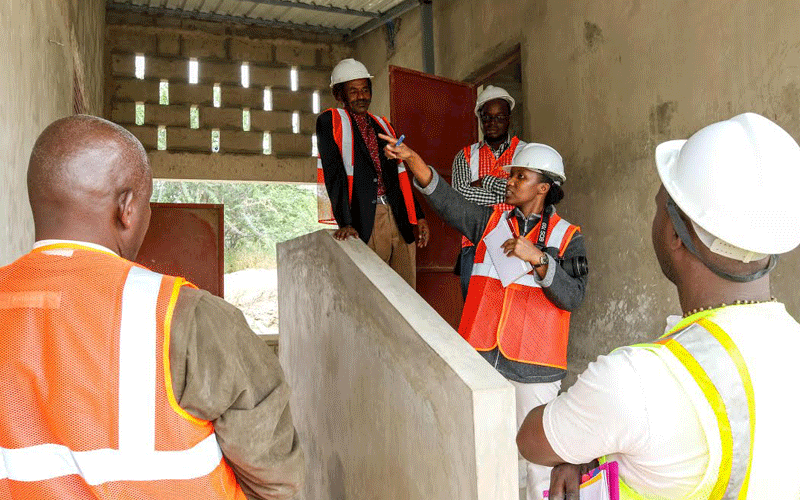How Covid-19 will influence future innovation in home design
By Joseph Maina, October 16, 2020Designers and architects expect the pandemic will affect building design long after the pandemic is over. Multifunctionality and need for more personal spaces in homes are some of the changes coronavirus has influenced.
The world is still smarting from the blows of the Covid-19 pandemic, a contagion whose disruptive thrust has been felt in practically every facet of our social and economic lives.
And as the shockwaves of the pandemic reverberate in the real estate industry, experts say that the sector must reinvent itself to align with the demands of the post-Covid-19 era.
It’s time to revisit the way we build our homes and how we interact in the built environment and shed some practices that do not conform to, say, social distancing in the home.
“As we approach a post Covid-19 era, a well-designed house will be critical all the while ensuring that the comfort at home is not compromised,” Architect Florence Nyole says.
She says a lot of the housing stock in Kenya lacks in basic design principles, such as admission of natural light and proper passive ventilation.
An architect with EcoSpace Architects and the chairperson of the Architects Chapter at the Architectural Association of Kenya, she asserts that our built environment currently suffers from the effects of intensive subdivision of land, which hinders proper design of homes.
“We have subdivided plots into too small parcels, such that proper design is a challenge.
The Sick Building Syndrome (SBS), which is caused by poor ventilation, resulting in dusty, smoky or foggy rooms and continuous use of artificial lighting is a major contributor to poor health and lack of wellness of the dwellers, especially in densely populated areas of our cities.
This not only results the spread of Covid-19, but also other airborne diseases,” she says.
The World Health Organisation (WHO) attributes the spread of Covid-19 largely to the movement of microdroplets, invisible to the naked eye, from infected persons.
The droplets can linger in the air for up to 20 minutes, during which time they retain their potency to cause infection.
Poorly ventilated spaces, therefore, serve as conducive environments for the spread of the disease.
“A poorly ventilated room will cause the microdroplets to be inhaled by other occupants or settle on surfaces causing further infection if not sanitised in good time”, Florence told Boma.
“Proper ventilation will be key in helping to alleviate the spread of the microdroplets.

Building our homes with maximum aeration is critical in mitigating the spread of the virus within enclosed spaces,” she added.
This, she says, will involve installation of open-able windows within living spaces to allow for sufficient airflow.
Further, in areas where wind speeds are low, aided air movement through the use of extracting fans will be required.
She, however, cautions against the use of air conditioning, as the principle behind these systems is to cool and recycle air into the spaces.
“If the air cycle is contaminated, these could be inhaled and cause infection to the occupants of the space”.
As the government implements the home-based care initiative for Covid-19 patients, we must rethink our interactions in the home of the future, seeing it not only as a conducive space for recuperation, but also a safe environment for caregivers and non-infected residents.
As Florence puts it, moving forward, there’s need to look at our homes not only as spaces for living, but also as places of care for patients.
“This brings the disease closer home and good design should offer as much isolation as possible if one of the occupants will require home-based care.
This would entail designing homes with a self-contained section complete with areas for washing, cooking and resting that can accommodate at least two persons.
Some form of visual continuity should be maintained to enhance human-to-human interaction and improve the chances of healing for the patient,” she points out.
Noting that the coronavirus also spreads due to contact with contaminated surfaces, Florence advises that there is need to not only sanitise potential contact surfaces in the home, but also minimise the number of surfaces that one comes into contact with.
And this, she says, is a potential area crying out for innovations. “We should, therefore, expect an acceleration in the adoption of automated systems from door opening to light switching and even washroom flashing.
The World Health Organisation has advised that surfaces should be disinfected as often as possible.
If these commonly touched surfaces could be reduced as much as possible, adoption of automation to a greater extent than has been done in the past will be necessary,” she explains.
The world has adopted social distancing as a key mitigation against the spread of Covid-19.
Under this new dynamic, the Chair of the Architects Chapter avers that we are likely to see a shift in the room sizes – especially living areas where guests are entertained – to observe this minimum distance.
Florence further says that some activities may be moved outdoors when the weather allows and there will be increased use of gardens and open spaces where there is fresh air.
Sanitisation will also occur as one enters the home, and these sanitation facilities could be installed right at the entrance in comparison to the current status where hand washing occurs at the guest bathroom or at the handwasining basin within the dining area or the kitchen sink.
A redesign of the entrance lobby to incorporate this may be considered. “Proper natural ventilation and admission of daylight into the living spaces will become critical,” she offers, noting that whereas this may be easily achieved in standalone units such as single dwellings, the challenge is greater in areas where there is dense construction, such as tenements and highrise buildings adjacent to each other.
